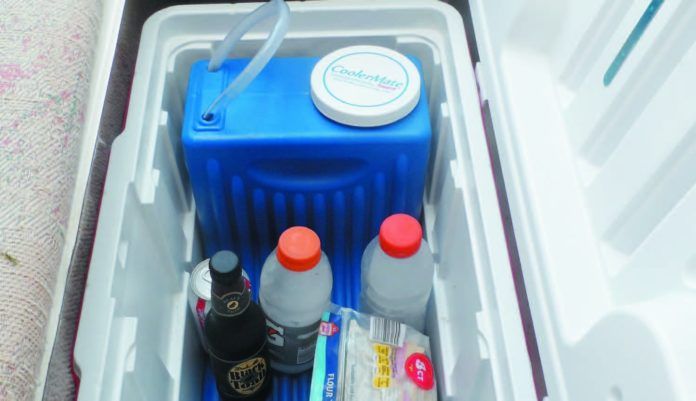In Making Ice Last (PS August 2018) we explored cube ice, block ice, dry ice and frozen bottles. Of course, many of the cooler manufactures sell reusable icepacks, touting convenience, decreased mess, and in some cases, lower temperatures. Most are not much use on multi-day trips, since they can’t be re-frozen underway, but perhaps they are just the thing for the one- to three-day trips that make up our weekender reality, at least most of the year.
What We Tested
Yeti, Rubbermaid, and Igloo make the rectangular freezer packs we are familiar with. Cooler Insert makes a refillable cooler insert. We also tested using frozen water bottles as a baseline, so that these tests can be compared to our Making Ice Last testing.
How We Tested
We tested using a 36-quart Coleman cooler monitoring the temperature rise at multiple levels after 24 hours. We also calculated the cooling capacity of each freezer pack.
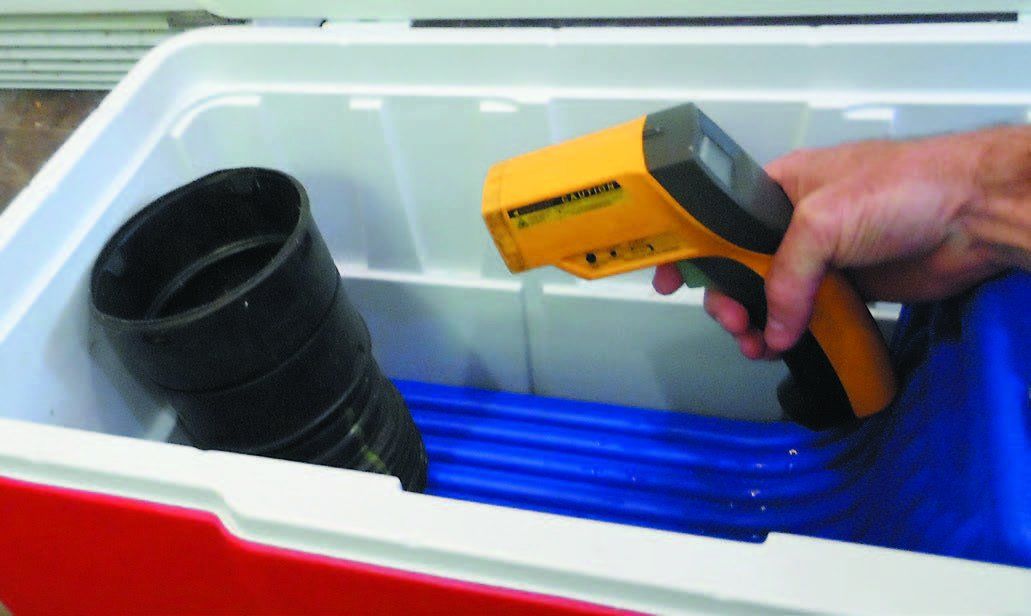
Observations
Most freezer packs deliver laughably small cooling capacity. They may keep your sandwiches cool until lunch, but only if the contents of the cooler were pre-cooled before filling (always a smart practice). There is no magic in the liquid they are filled with. They are primarily water, sometimes blended with propylene glycol to lower the freezing temperature and gelling agents to limit spillage in the event of a leak (none leaked in testing, but this has happened to us in the past).
Although adding glycol does lower the freezing point, it actually reduces the cooling capacity of the pack, since glycol has a lower heat of fusion than water. The bottom line is that you need as many pounds of freezer packs as you would pounds of ice to achieve the same cooling effect, and that can be a lot of packs.
Being able to place the packs on top of the food is a significant advantage, since cold air sinks. Slap a frozen pack on top of something critical, like raw meat, and you can be sure that it will stay cold until the pack thaws. Just as with frozen water bottles, the plastic packaging slows the cooling a little and makes the pack last a little longer.
The most unique product in the lineup was the Cooler Insert. Molded from polyethylene, it is designed to wrap around the food on one end of a cooler. It can be frozen solid (if you have a huge deep freeze) or filled with cube ice. Molded corrugations insure that air can circulate even when the cooler is packed.
The winning feature is that the water can be siphoned out using a simple shaker siphon, and more ice easily added, without disturbing the food. We also like that we can transport the cooler to and from the boat without the extra weight of ice, a boon to aging backs. Once stowed on the boat, dump in a charge of cubes and you are all set for a few days. When it melts down, siphon out the water and add more ice. When returning home, siphon out the melt water and the cooler is immediately 15 pounds lighter.
Frozen bottles
We love the convenience of grabbing pre-frozen bottles and stuffing them in the cooler for a 1-3 day trip. There is no mess, you can drink the melt water, and food access is easy. Tips: fill the bottles only 90 percent, and squeeze slightly before closing, to allow for expansion without bursting. Heavier-duty sports drink bottles and ice tea jugs hold up best. Pack the jugs on top of the most critical food items. We also researched the internet myth that re-freezing bottles can cause them to leach toxic substances; although they can break, the myth seems to be based on several misleading internet postings posing as prestigious institutions, and is thus, without basis.
Bottom Line: Best Choice for short trips.
Igloo
Filled with water and a gel agent, they are economical, these are not as handy as frozen bottles.
Bottom line: Best Buy in commercial ice packs
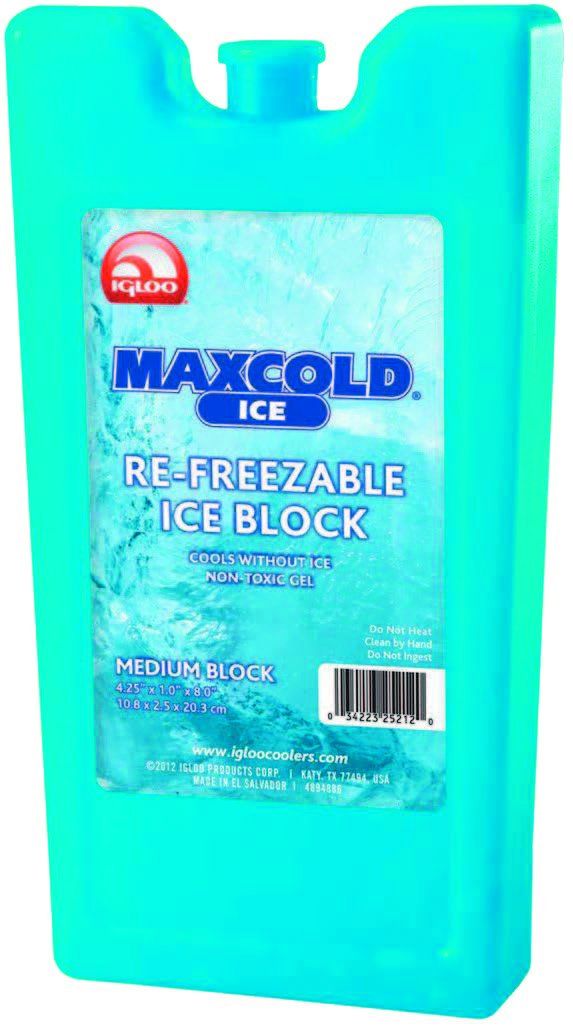
Rubbermaid
A little better made and a little more expensive. But cooling capacity is still woefully limited.
Bottom line: OK for keeping sandwiches cool.
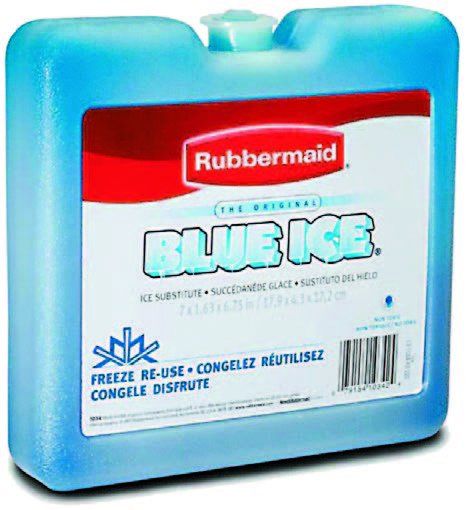
Yeti
Blended with propylene glycol, these are available in a number of temperature ratings. In a well-insulated cooler this should allow them to keep frozen food frozen, but not for all that long. Of course, coolers loaded with frozen food always do well, since there is a greater mass of frozen water. No surprise here.
Bottom line: Best Choice for maintaining frozen foods.
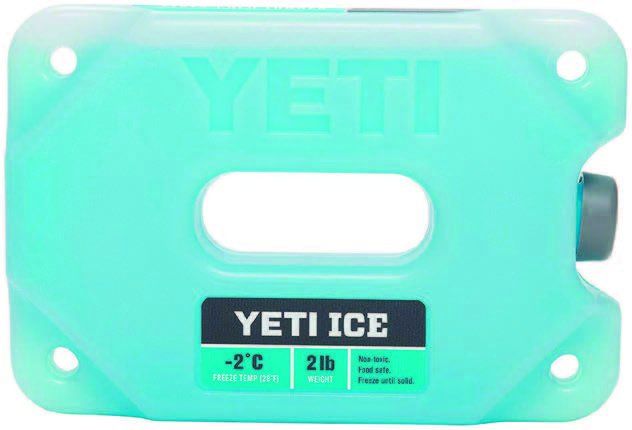
SoCool cooler insert
Formerly known as the Coolermate, this unique molded ice container makes a cooler nearly as convenient as a refrigerated ice box, though not as cold. The molded shape fits well in larger ice chests, the extended leg helps even temperatures when the cooler is full, and the built-in shaker siphon makes removing melt water a breeze, without moving the food or making a mess.
The minimum cooler size is 36 quarts, and you should carefully measure-it fit one of our 36-quart coolers, but not the other. For large coolers, fit one at each end.
Bottom line: The Best Choice for mid-size coolers for all-around use.
Conclusions
We have no real need for ice packs. Frozen bottles and jugs give us the same cooling capacity, with the benefit of cool water when they eventually thaw. For longer trips, the Cooler Insert is a good step forward, easier to manage than ice.
Top and bottom temperatures were measured at 4 inches from the top and bottom of the cooler. The Food and Drug Administration regards 40 degrees to be the safe temperature for food storage.





























